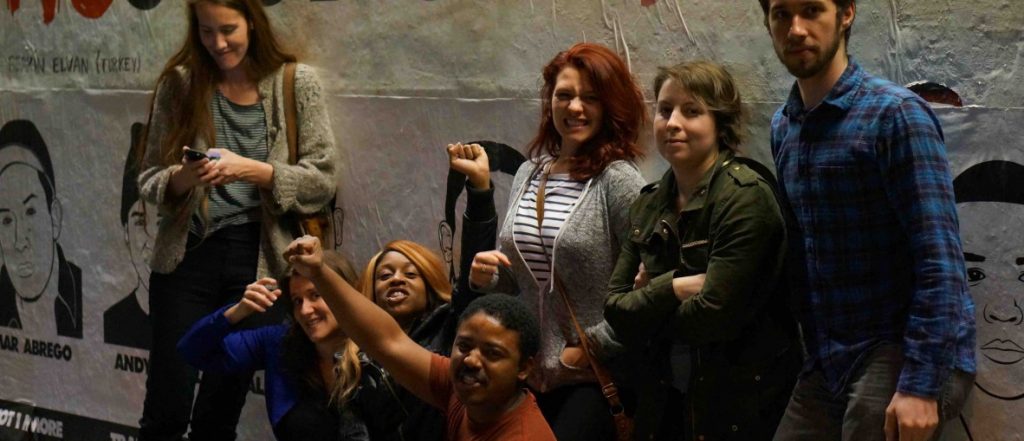HOW TO DO CRIMINAL JUSTICE TECH THE RIGHT WAY
- JASON TASHEA
- January 20, 2016
- 2:19 pm
Technology is creating new opportunities for improvement and reform of the criminal justice system.
In Arizona, a county court created a web and video accessible kiosk where individuals can “appear” in court 70 miles away. Around the country, the ACLU released apps to crowdsource police oversight. And in Chicago, there is a new visualization showing the financial impact of mass incarceration.
These are just three of the more than 50 projects surveyed in a new report—released today—which I wrote for the Research and Evaluation Center at John Jay College. The report, Emerging Justice Technologies and the Need for Evaluation, accomplishes three things. First, it introduces justice stakeholders, such as police, corrections, reform advocates, and court officials, to the larger trends of government and civic technology that are behind these new projects. Second, it surveys new criminal justice projects and platforms that aim to improve system efficacy, crowdsource information, and collect and visualize data. Last, it makes five recommendations to better nurture the understanding, creation, and implementation of emerging justice technologies.
The surveyed projects are exciting, innovative, and many hold promise to increase fairness, efficacy, and comprehension of the criminal justice system. However, unlike building a tool to find a cab or a restaurant, technology affecting criminal justice requires more stringent assessment. The criminal justice system is the greatest point of control the government can have over an individual, so the need to “get it right” is paramount. Therefore, the technologies that compliment or supplant aspects of this system raise unique questions that require a high level of scrutiny and validation.
Currently, however, critical questions about these new technologies go unanswered. For example, do platforms collecting detailed information about those on community release increase re-arrest rates? Can new technologies compound already present racial bias? Regarding user experience, are projects accounting for those with developmental disabilities, a significant cohort in the criminal justice system?
For a number of reasons, technological advancement outpaces the capacity to answer questions like these. First, research for this report revealed that while individual projects exist, there is no centralized organization or university initiative focused on researching these new technologies. Second, the organizations creating many of the tools in this report are not in the business of research or validation. Third, this area of criminal justice is still new, which means limited attention and funding. Together, these hurdles mean that we run the risk of iterating projects without first understanding efficacy and potential negative, unintended consequences.
With this in mind, the Research and Evaluation Center is moving forward with the report’s five recommendations to support civic technology and criminal justice organizations to verify and improve the impact of their work.
First, the Research and Evaluation Center will build an initiative that brings together leaders from the criminal justice and technology fields. This will be a venue to convene experts and foster open dialogue about how technology can alleviate the myriad of issues confronting criminal justice. Creating this community will allow criminal justice and technology professionals to learn from each other while promoting new ideas and projects.
Second, once this initiative is created it can begin to identify emerging and best practices through research and evaluation. This research can create a path towards validating practices that will be shared openly among government leaders, technologists, and reformers to improve creation and implementation of projects.
Third, as a result of this work, a cadre of professionals will be created to span the worlds of criminal justice and tech. These individuals will be valuable for their capacity to understand complex criminal justice systems and technology and their ability to translate for those on either side of the criminal justice-technology spectrum.
Fourth, this initiative will be inclusive and incorporate previously incarcerated persons and communities that are acutely impacted by the criminal justice system. Those affected by the criminal justice system possess invaluable lived experience that will improve user experience, project development, and user adoption. Last, this work will be used to educate the public on technology’s role in criminal justice and reform.
Collectively, justice stakeholders, reformers, and those affected by the justice system will benefit from a unified home for emerging justice technologies. However, the bar for success cannot merely be the deployment of a new technology; it must be data driven and informed by the best research. To do otherwise will impede technology’s increasing role in a fairer and more just criminal justice system.
Jason Tashea is a legal and criminal justice technology consultant at the John Jay College of Criminal Justice. He is also the founder of Justice Codes, a nonprofit focused on the use of technology to improve access to justice.





 is terrifying, nor because I was disappointed in myself because I lost my cool, and created an extreme, unbridgeable divide between our viewpoints by invoking the Holocaust. No, this conversation was most terrifying because these people were not bad people. They were the type of people I appreciate: good, kind, hard-working people who love their kids and their family.
is terrifying, nor because I was disappointed in myself because I lost my cool, and created an extreme, unbridgeable divide between our viewpoints by invoking the Holocaust. No, this conversation was most terrifying because these people were not bad people. They were the type of people I appreciate: good, kind, hard-working people who love their kids and their family.